Inspired by an engaging time-filler meme on social media , my thoughts returned to that venerable roleplaying game Traveller, profiled on Tor.com earlier this year. Anyone who has played Traveller (or even just played with online character generation sites like this one) might have noticed that a surprising number of the characters one can generate are skilled with blades. This may see as an odd choice for a game like Traveller that is set in the 57th century CE, or indeed for any game in which swords and starships co-exist. Why do game authors make these choices?
There are three contributing factors in the Traveller game setting, two Watsonian and one Doylist:
- The Imperium doesn’t try to bring every world of the Imperium to the same tech level. There are worlds where fusion guns (human-portable) are standard military gear; there are planets where folks still use swords.
- A fair bit of in-game violence takes place on starships. You don’t want to use weapons that will trash the starship. Sure, Traveller bulkheads may be as robust as tank armour, but other equipment wouldn’t stand up to bullets.
- Swords and other edged weapons are cool. That’s the only reason that matters.
Just as games mix swords and starships, so do SFF novels. The trope goes way back, to the planetary romance novels of the Golden Age. Here are five examples.
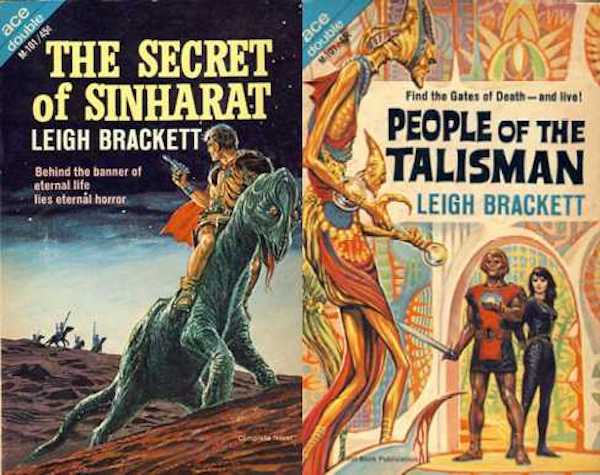
Let’s start with a planetary romance series. Leigh Brackett’s Eric John Stark, protagonist of such tales as The Secret of Sinharat and People of the Talisman (stories originally published 1949–1964), was raised by Mercurian natives after his human parents died in a cave-in. He survived the harsh Mercurian lifestyle as well as the massacre of the Mercurians at the hands of humans. He’s rescued from the killers by Simon Ashton of the Earth Police. The adult Stark has gained a patina of civility and can function in human-dominated society, but he has never lost his sympathy for oppressed peoples—nor his tendency toward ultra-violence.
In Brackett’s version of the Solar System, civilizations have arisen (and fallen and re-risen) on several planets. Some of these are/were technologically sophisticated, some aren’t/weren’t. In most of them, hi- or low-tech, the strong prey on the weak. Stark can handle weapons from sidearms to blades. He uses whatever works when he finds himself caught up in other people’s problems (as happens often enough to provide many thrilling adventures).
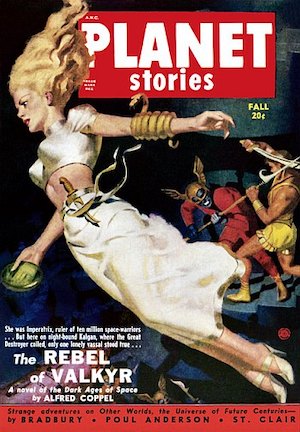
Golden Age SF also extended the planetary romance tropes to interstellar swords and starships. Alfred Coppel’s 1950 novella The Rebel of Valkyr (and the Rhada series of which the story is a part) features a grand interstellar empire. As so often happens with galactic empires, the first empire collapsed, and a very lengthy dark age followed. The new empire is only a shadow of the first.
The engineers of the old empire built well, so automated starships still ply the interstellar deeps, crewed by plate-armour-clad barbarians who haven’t the slightest idea just how far or fast they are travelling. Keiron, Warlord of Valkyr, is a feudal warrior, a believer in hierarchy (as long as he’s at the top) and conflict resolution by violent means (at which he is skilled). It’s bothersome to be opposed by people who resort to cunning and political machinations, as well as foes who refuse to die when stabbed.
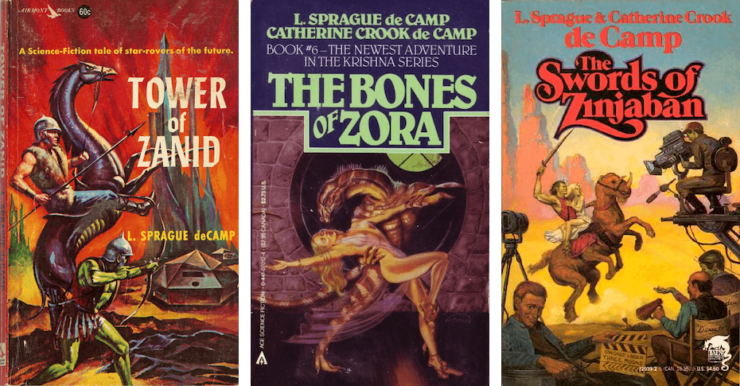
In L. Sprague de Camp’s Viagens Interplanetarias tales—The Bones of Zora (1983) (with Catherine Crook de Camp), The Tower of Zanid (1958), The Swords of Zinjaban (1991) and many others—relativistic starflight has revealed that our region of the Milky Way hosts many intelligent beings. Some worlds (like Earth or Osiris) are technologically sophisticated enough to build starships; others (like Krishna, Ormazd, and Vishnu) aren’t. The Interplanetary Council has imposed a technological embargo: no importation of technology that locals do not already possess. This decision is driven less by concern for low-tech cultures than by fear for their own well-being (imagine an alien Genghis Khan with starships and hydrogen bombs).
In the long run, the embargo is clearly doomed; simply knowing that advanced technology exists is enough to inspire insightful rulers to seek out the means to develop it for themselves. In the short run, the policy facilitates no end of thrilling swashbuckling as Terran tourists fan out across worlds like Krishna armed with misplaced confidence, a keen interest in amorous encounters with the humanoid locals, and a profound ignorance of local customs.
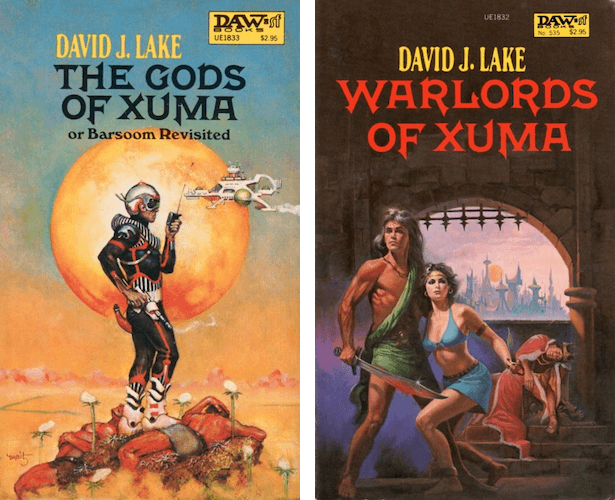
David Lake’s Disco-era sword and starship Xuma duology—Gods of Xuma (1978), Warlords of Xuma (1983)—combines de Camp’s playfulness with a considerably more jaundiced view of humanity. He sets a Barsoomian world against war-mongering, xenophobic human invaders. The duology is part of a larger series in which, alas, human flaws are given considerably more stage time than their virtues.
In the Xuma novels, humanity has only marginally survived two nuclear wars; it has been reduced to several (mutually hostile) lunar colonies. Nevertheless, it has managed to send slower-than-light starships out to explore the nearer stars. The Euro-American Riverhorse discovers that 82 Eridani 3—Xuma to its inhabitants—is the Mars our own Solar System never had: arid but life-bearing, a new home for humanity.
Pity that there are natives. However, they shouldn’t be a problem. The city-states of Xuma appear to have spent the last two million years satisfied to putter along with 18th-century technology. The same Euro-American military know-how that helped turned Earth into a glowing ruin should have no trouble at all dividing and conquering these hapless aliens. At least, that’s the story the humans tell themselves as they prepare what they expect will be a trivially easy invasion. Victory is assured! Although perhaps not for the Terrans…
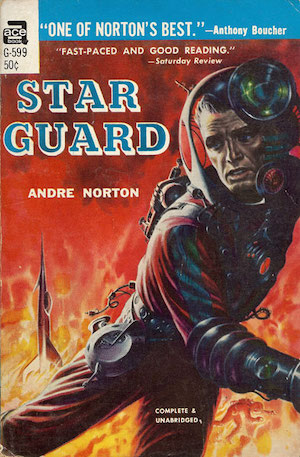
Perhaps the greatest (or at least a highly influential) example of a barbarians-in-space novel is Andre Norton’s Star Guard (1955). Here, the barbarians are human. The known galaxy is dominated by super-advanced aliens, who regard humans as naturally backward and violent. Humans are confined to Earth. A lucky few can venture out to the stars if they are willing to serve Central Control as “combatants” (AKA mercenaries).
Kana Karr is a Horde Combatant. Hordes are allowed to use only low-tech weapons. He and the Horde to which he is assigned are sent to the planet Fronn, there to ensure that the Central Control-favored side wins the on-going civil war. In short order, Karr discovers that:
- The Combatant unit to which he has been assigned has a curious assortment of skills for a Horde Unit.
- Someone has armed the opposing army with high-tech weapons.
The Horde must retreat; the retreat proves difficult. There is skullduggery in high places.
* * *
Swords and starships are an ongoing trope. Consider the success of the Star Wars franchise; consider the recent Gideon the Ninth. Or even better, the upcoming Harrow the Ninth, which is sitting on my coffee table.
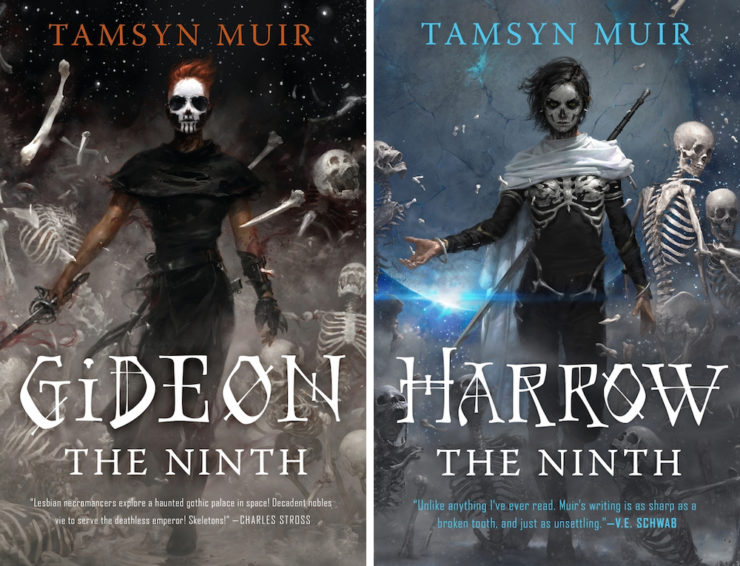
Buy the Book


Harrow the Ninth
I could go on (but I am sure that you will complete the list in comments).
In the words of Wikipedia editor TexasAndroid, prolific book reviewer and perennial Darwin Award nominee James Davis Nicoll is of “questionable notability.” His work has appeared in Publishers Weekly and Romantic Times as well as on his own websites, James Nicoll Reviews and Young People Read Old SFF (where he is assisted by editor Karen Lofstrom and web person Adrienne L. Travis). He is currently a finalist for the 2020 Best Fan Writer Hugo Award and is surprisingly flammable.










